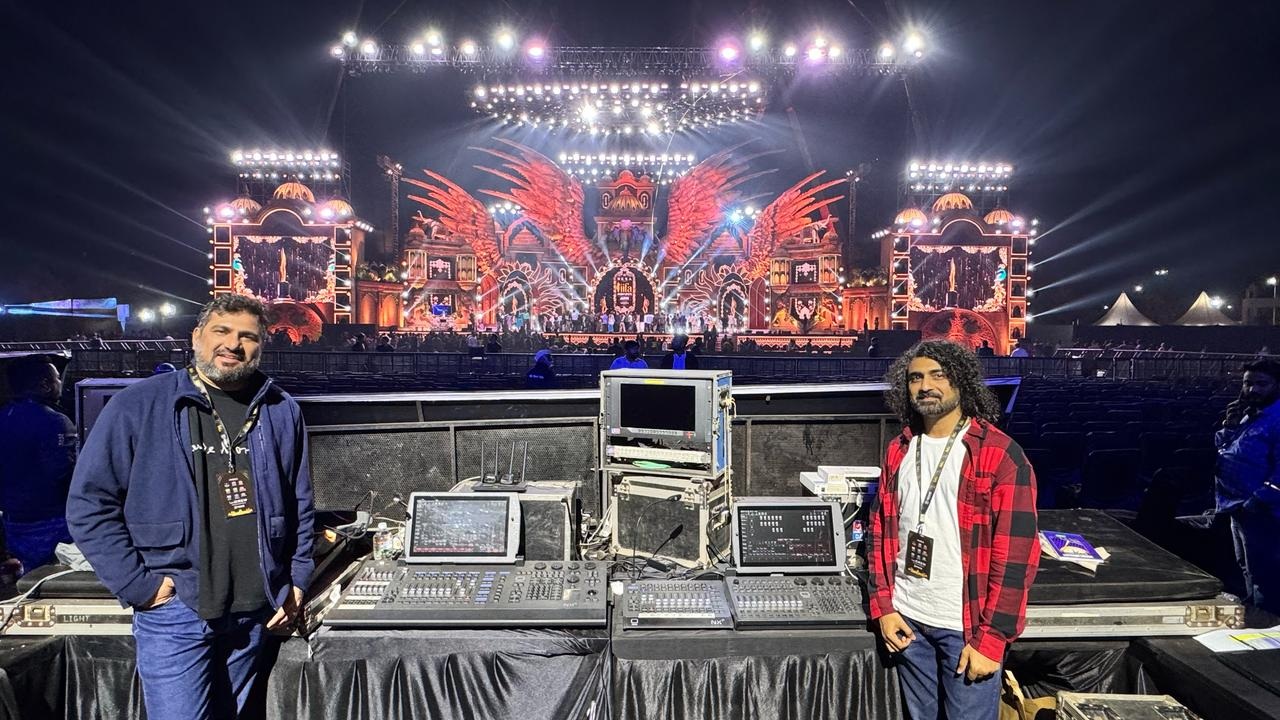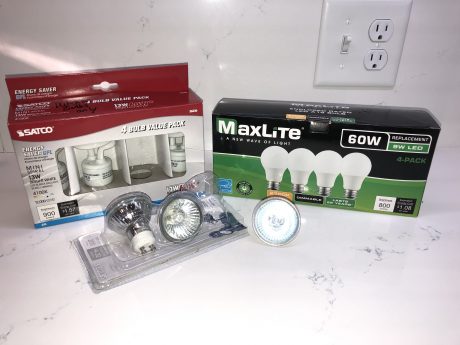
By Nook Schoenfeld
One likes to think that some 30+ years as a stage electrician and lighting designer might convince oneself they are qualified to use these skills in their own residence. After all these years of attempting just that, I firmly believe I am not qualified at executing my own house light commands.
I think I can start this personal debate between the homeowner Nook and the LD Nook by mentioning I just counted all the different types of lightbulbs currently installed in various fixtures in my house, and they number eight. As a stage LD I was often accused of being that knucklehead who liked to employ a diverse range of fixtures for a show, as opposed to just using 60 of the same type hybrid and working in bulk. I seem to mirror image that choice in real life.
These bulbs also range in price from a $1.50 small halogen bulb to an $85, 32-faceted, amber tinted, tungsten bulb. One might think that last one is a little eccentric, as I did at the time of purchase. I now realize it was just a dumb move. But I like artsy things that is still useful. So this bare bulb hangs by a single wire in a corner of my couch usually reserved for reading.
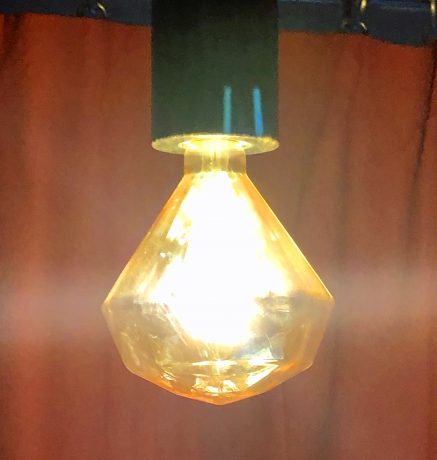
Fixture Woes
Where I really excel at sucking – is in my choice of permanently installed light fixtures; ones that were designed for installation by professionals. My wife and I wanted a new light over our dining table. One with individual focusable heads so we can light wall art, or the table, or the room itself when preferred. Home Depot had one we liked and I didn’t think twice about purchasing the fixture. It was a long day navigating wiring a house with plaster walls, but it looked great when I was done and we were quite happy…, for about a year. Til we had to change a damn lightbulb.
At this point I realized the procedure required 90-degree needle nose pliers of a size more suitable for dentistry. To get the old halogen bulb out was not a process by which I simply remove the retainer ring holding it in and insert and twist an HTI style bulb in a socket. No, no, no my friends, this requires being able to get one’s nimble fingers in a space where a single inch long piece of cable attached to a socket recedes. One must twist lock this socket on to the bulb after lining up two miniature posts by feel. One hand is trying to hold a round socket from turning with some long needle nose pliers while the other holds the bulb. This all takes place in a housing half the size of my hand. When did tools become a necessity to change a doggone household bulb?
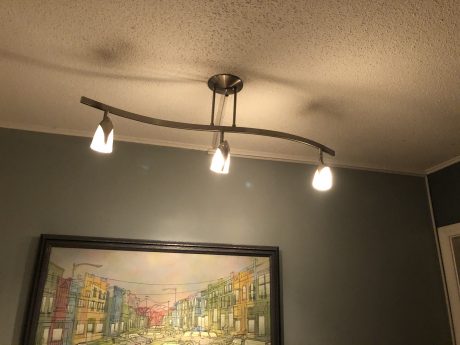
Many expletives are hurled as I fail in my attempt to replace this bulb with my stubby fingers. After 30 minutes I have resorted to drink, to ease my frustration. I call my 5’1” wife with her incredibly slender fingers over to aid the old touring veteran who’s changed every bulb known to man during his career. She stands on the table and acts like a surgeon as I assist. “New bulb”, check. “90° needle nose pliers,” check. “Shine the flashlight so I can see,” check. I watch as the fidgeting continues for five anxious minutes before my wife exhales loudly, followed by a term previously never heard emitted from her sweet mouth. “Motherfu@#er.”
She looks me in the eyes and proclaims, “I will get this damn bulb in. But this will be the last one. You go down and find us a new fixture before the next bulb goes.” I nod my head in agreement like an LD being shamed by an artist for poor judgement. But doggone it, I still have two more spare bulbs in the closet….
It doesn’t get better
I wish I could say this was the only bad fixture choice I’ve made in household lighting design, but I’ve done worse. My previous house was a split level. The front door opened into a hallway with two opposite staircases and a tall vaulted ceiling. It had this crap light fixture hanging there and I relished a fancier chandelier type fixture.
So I went down to Menard’s (OK ,maybe not that fancy) and found something I thought was a nice fit. It had these sexy looking slim bulbs with tips like candles, but they didn’t flicker. So I bought this upgrade and brought it home to install. There I stood, stretched out on a 20’ extension ladder, at an angle, with the bottom feet wedged between two steps – much resembling a third world meme.
Now anyone who puts up Xmas lights knows you should plug them in and check for loose or bad bulbs, before you get up on a ladder and hang them. I failed to apply that standard operating procedure with my new chandelier. I spent four hours on a ladder, leaning against a stairway with my only support being my leg hooked through a top rung to hang this 16 bulbed beauty. This required more parts and labor than originally estimated, but once finished, I clean my mess and flick the switch to admire my work. Doggone it, four bulbs are out. I’ve got a 25% failure rate.
As I’m one of those people that require multiple trips to the hardware store for any home improvement project, I head back for some replacement bulbs. I search for ten minutes thru hundreds of bulbs before requesting assistance. This turns into 30 minutes of delays as the Menard’s electrical supply house determines that replacement bulbs for the lamp they just sold me are no longer manufactured. I’m dumbfounded as they apologize and tell me to just return the fixture and they will refund me. Huh? You want me to remove the one I just put in and spend another four hours installing a replacement? You’re on dope.
I walk over to the shelf and there is one last model of the same type available. I ask them if they will open it up and swop out my four bad bulbs with four new ones from that case. They refuse with some lame excuse. OK then, now I‘m flabbergasted. I just buy the last model off the shelf. Once home, I replace the bad bulbs, keeping a few extra bulbs for future use. I return the new lamp for a refund, looking perfect in its original packaging.
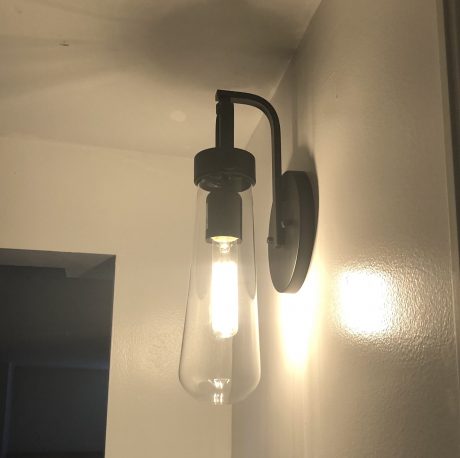
Warm, Cool or Variable?
Color temperature plays a big part in how I illuminate my house these days. While I do like the old incandescent 3200k amber look in my living room, I really didn’t like how the old incandescent replica bulbs looked above the mirror in my white bathroom. As the old household bulbs slowly transformed into LEDs, I accidentally bought some “daylight” LED bulbs at Home Depot one day. I replaced the bathroom lights over the mirror with these and wham! it was all up in my face. My cozy bathroom sprang to attention. I instantly marveled at the new color temperature and how the tiles sparkled. Mind you my wife did not agree with my new color temperature choice at first, but knowing my affinity for all things lighting, she gave me this one.
We read a lot of books in our house, so we want comfy rooms like the living room lit with warm light. But the kitchen is another story. We had the kitchen remodeled last year in various hues of white, and chrome. While I didn’t want it lit up like a hospital, I wanted it a bit cooler than my living room. What I wanted was a 4800°K room, the same temperature I like my televised shows shot at.
I found some LED lightbulbs online that were color tunable to an app and looked like they might be a good fit. I wanted to go for it, but they were asking $80 per bulb, with no expected lifetime listed and at that time had no reliable recommendations. I would require three of these fancy bulbs for the $100 light fixture I had installed, plus one over the sink. My common sense prevailed and I kept searching for alternatives. I can’t spend more on a bulb than I did on a fixture. I just can’t.
I found these unique bulbs from China. They boasted a color temp of 4100k and were only 13-watts each yet advertised as bright as a 40-watt incandescent bulb. Better deal. Cost me $40 for a box of six. My main overhead light was a three bulb, generic dome type light. They looked great and performed flawlessly for about six months. Then they started dimming in lumens. Finally one went out and I replaced it. The replacement bulb was noticeably brighter than the other two. My OCD forced me to change the others to match. The older, more dim bulbs get recycled to my sink fixture or basement workbench, cause I’m too cheap to chuck them out. Old habit from my days working at PRG I reckon.
I had to make a choice on which color temperature WWT LED tape I wanted under my new cabinets to light the counters. The contractor was offering me a choice, hot or cold light. I informed him there was a wide selection, and I wanted something tunable. They hedged and hawed til I showed them what I wanted was available from TMB. I now have LED tape that I can turn down to a CTO glow as a night light or tune up to 6000+ with a remote control. I feel I won this one.
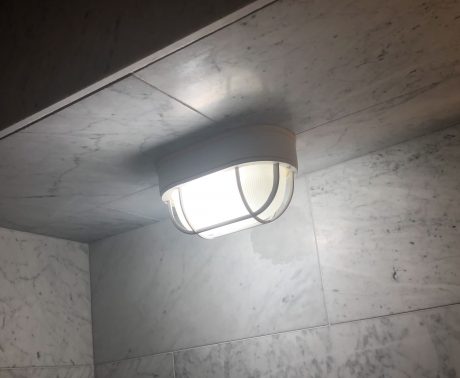
Last winter I think I finally got one right. I added a new bathroom in the basement, one with no windows, but I wanted daylight. I designed the room using marble and wanted a 5600° color temp to make it pop. I also didn’t want to ever change a bulb in this room during my lifetime. I had fixtures installed using COB technology. They are guaranteed to last 50,000 hours. I also found a reason to finally install a working waterproof bulkhead (boat) light in my home, in the shower itself. For those of you have ever worked with Patrick Woodroffe, this may ring a bell.
Lamp life
I wonder how they know these facts written on the cardboard cases that hold spare lamps. Some bulb was just invented and manufactured last year, but they tested it, and it’s “Guaranteed to last 5 full years”. I also never see the disclaimer on any box of bulbs that states, “Bulb will start to seriously dim 2/3 of the way thru its lamp life.” My bathroom COB lights would last 5.58 years if left on all the time. I reckon they are on less than five hours per week, so I’m safe. But what about the regular household bulbs? I notice all kinds of guarantees on lamp life in the packaging. So I put one of those 15w spiral tubed LED bulbs in a socket in my laundry room and left it on continuously.
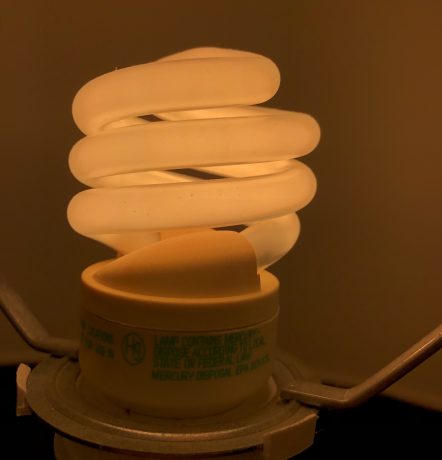
The packaging said it would last 20,000 hours (833 full days). After 18 months (13,500 hours) the bulb started to dim and the casing turned yellow in color. My 15-watt, 5600°K bulb now resembled a dim 25-watt incandescent of old, while emitting a ghastly yellow hue. After 29 months, the bulb blew a hole in the side of the glass and died. It had been on for approximately 21,170 hours. Did I win? I got the hours, but not the same quality light. Is this any different than an arc sourced bulb dimming and browning out?
Outdoor Illumination
I live in a house in a city. It’s a good idea to have a motion detector light in my backyard and I really enjoy this unit, until it went dark one day. I changed the bulb out, but that did not fix the issue and after investigating online, I found the power supply was probably shot, as these last about twenty years. So I look online to find the same model. Of course they do not exist, so I go down to the local hardware store and chat with my guy. He’s got a different model. I take the model and quickly grab a floodlight bulb off the shelf that looks like it will fit.
So here I stand again, leg hooked around the top rung of the ladder as I cuss for an hour wondering why this has to be so hard. Of course the preexisting anchor screws do not line up and more power tools than originally expected are required. After finishing I admire my work and head down to the basement to rethrow the circuit breaker.
As I step around the corner of the house the motion detector recognizes me and I hear an audible bang as the bulb shatters into pieces and rains glass down in front of me. I unscrew the bulb and walk over to the case I took it out of. There in plain site is a warning “To be used in low voltage applications.” Operator error. At this point I realize this LD knows about as much as a rookie lighting tech putting an ACL bulb in a 110v par can.
After all these years, I should just admit a defeat and hire a proper lighting designer and electrician to work on my own home. But my ego just won’t allow that.

